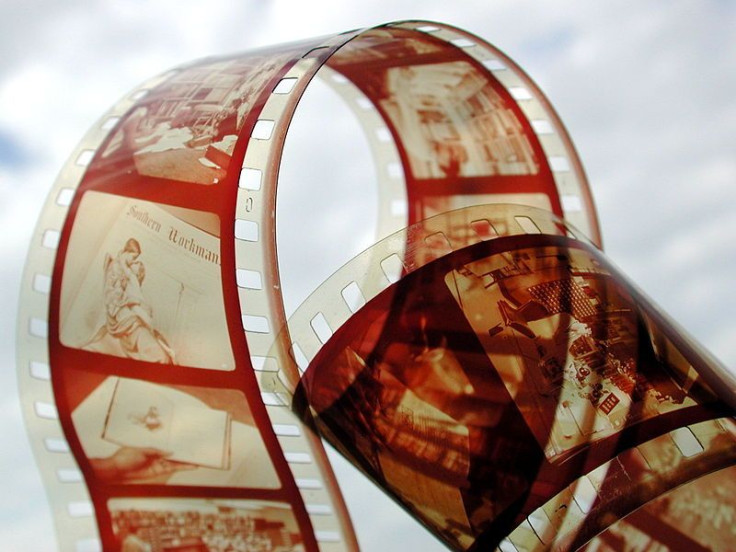While Fantastic Fest 2015 in Austin was mostly about new genre films like High-Rise, The Witch, and The Lobster, there was also a smattering of repertory movies to round out the madness. The most shocking was Goodbye Uncle Tom, an infamous Italian “mondo” movie about a modern day film crew in the antebellum South capturing the horrors of slavery. While it’s politically charged, anti-racist message burns to this day, the message is complicated, even undermined, by its cruel and voyeuristic recreation of atrocities exercised against black bodies.
Fantastic Fest 2015 - Why Does Old Film Turn Red?
But alongside the troubling imagery Fantastic Fest viewers undoubtedly also noticed the red tone that had overtaken the 1971 exploitation shocker. While film preservation efforts have restored a number of rotting film prints to their former glory, neglected and forgotten films often suffer from this red pallor sucking the life out of decades-old color footage. But what exactly causes old film prints to turn red?
Jeep Camper Commercial With Extreme Red Fade
Technicolor perfected the three-color process that defined early color film in 1932. The technique was expensive, involving three separate black and white film negatives, each capturing one-third of the full color spectrum (for this process the spectrum was divided into red, green, and blue). Each of the three negatives would be dyed in the complementary third of the spectrum they represented and then pressed into the emulsion for the final release print of the movie.
The Fall of Technicolor Film
The Technicolor process was expensive, but provided the lush color that has come to characterize 1940’s blockbusters.
Then Eastman Kodak came along with their Eastmancolor process. The film was both cheaper to process and cheaper by the foot, advantaging both cost-cutting studios and smaller releases with more limited print runs. Unlike Technicolor, which had to be shipped to Technicolor facilities, Eastmancolor could be developed in standard photo labs.
Technicolor’s share of the market sank through the years, finally discontinuing in 1975 and ceding color film entirely to Eastman Color. The illusion of market fragmentation continued as different laboratories used different names for identical processes.
But Eastmancolor had a major problem. The dye used in the cyan third of the spectrum faded to red and eventually clear while in storage. This has since been a nightmare for film preservation efforts for obvious reasons. And while color fade is a problem with poorly preserved film generally, the first 20 years of Eastmancolor prints are in particular danger. Eastmancolor film can fade to pink in as few as five years.
Eastman Kodak introduced low fade film in 1979, which improved the durability of the cyan dye (earlier low-fade film existed, but was mostly used in 16mm productions). However, it wasn’t just a problem of technology, but of changing industry standards.
Enter Martin Scorsese. Nitrate Won’t Wait: A History of Film Preservation in the United States offers up this quote the director gave to Daily Variety in 1980:
“Forget about me as a filmmaker; I’m just sick and tired of it as a moviegoer. I’ve had it. I’m getting older and I’m sick and tired of seeing these pictures year after year get worse and worse. It took me seven years to find a 35mm print of Luchino Visconti’s The Leopard — and it’s pink. It’s a pink leopard.”
Getting studios to change to low fade film stock took a few years, but a petition signed by Leni Riefenstahl, Federico Fellini, Jean-Luc Godard, Steven Spielberg, William Wyler, Francois Truffaut, Jacques Tati, and Martin Scorsese got the ball rolling. Scorsese also organized repertory screenings of color faded prints at the 1980 New York Film Festival, ending the event with a badly faded print of Once Upon a Time in the West.
Preservationists and studios are able to re-split the the single color film print into the three thirds of the spectrum, correct the faded one, then reconstitute a newly dyed and corrected print. But it was and is an expensive process, leaving films like Goodbye Uncle Tom in the lurch. New Digital Cinema Packages (DCP) can capture fading film and partially preserve some of these damaged film prints for the future. But continued efforts will be needed to preserve, correct, and restore faded film.
That’s why new initiatives like the one announced Monday by the American Genre Film Archive (AGFA) are so important. Check out the AGFA Kickstarter for more on their effort to purchase a 4k film scanner that will allow them to capture fading film in its current state, salvaging what we can from some of our most vibrant cinematic decades.


















